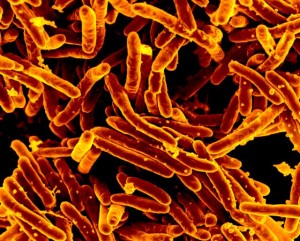FRIDAY, 27 MAY 2016
 MDR tuberculosis infects 0.5 million people each year.
MDR tuberculosis infects 0.5 million people each year.The prospect of once more living in a world where people everywhere die from illnesses which today’s citizens of industrialized countries think of as relatively trifling, such as pneumonia, is indeed a scary one. The findings of this new study raise hope that in the future it will be possible to use bacteriophages that bind to bacterial drug transporters as a therapeutic approach. In combination with traditional antibiotic drugs, they may enable us to combat and contain antibiotic-resistant infections.
The full open-access paper can be read here: doi:10.1038/srep26717
Image by NIAID CC BY2.0
Written by Janina Ander
